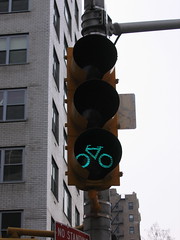 Crossposted at Greater Greater Washington
Crossposted at Greater Greater WashingtonRiders filled the Prince George's County WMATA budget hearing on Monday despite a suburban and relatively transit-inaccessible location, and made heart-wrenching please to retain their vital lifelines, bus service.
At least 100 riders attended and over 40 people gave testimony. Board Member Elizabeth Hewlett and General Manager John Catoe were both present to listen to the riders.
Many of the commenters called on elected officials to pitch Maryland's contribution in. Many audience members wore "O'Malley: Stop Bus Cuts" pins created by the Transit Riders United of Greenbelt, and said that if bus service is cut, they won't vote for O'Malley again.
Almost all of the speakers were strongly opposed to any cuts in bus service. Two blind Greenbelt residents, Laura and Shawn O'Neil, testified about the hardships cuts would bring them. Currently, they have two buses which serve both Greenbelt Metro and New Carrollton Metro. Under Metro's proposal, they will lose their service to New Carrollton, where one of them works, on both routes. His only option will be to switch from fixed route service to paratransit, at a cost of approximately $19,000 per year to Metro.
I overheard a Metro planner speaking with Ms. O'Neil in the audience prior to the hearing. Instead of offering her alternatives or even attempting to understand her condition, he blithely told her that she could find a way to cope with the changes. He completely blew off her concerns that transferring between buses in a strange place with poor pedestrian accommodations would be difficult for a blind person, and left her in tears. With representatives like this, it's no wonder the community doesn't have a lot of faith that WMATA actually listens to customers.
One speaker asked the WMATA panel if they ever wondered if paratransit (MetroAccess) costs were so high in Prince George's because the fixed route service was so abysmal. That comment got quite a few nods through the room.
A few citizens came forward to speak out against the elimination of the R3 bus, which serves the National Archives facility in Adelphi. Some riders in the area will be left without service at all times, others would lose service on weekends and off-peak. They spoke of the importance of continuing to have good access for visitors, researchers, and employees at the National Archives, and also of the general importance that transit plays in keeping livable communities accessible.
Other riders spoke out against fare increases. Some talked of the hardship of the additional cost of their commute, others were opposed to giving more money to an agency in which they have little faith. Some spoke of the waste they think exists in the agency, while others criticized what they characterized as the overpayment of workers and lack of oversight of Metro.
The meeting was at times boisterous, with applause and the occasional 'amen' from those in the audience. It was at all times civil. Most speakers stayed within the 3 minutes alloted for testimony.
Metro provided a shuttle from New Carrollton station to the hearing, which ran continuously during the proceedings. Additionally, the city of Greenbelt organized a bus to take residents to the hearing.
However, citizens who didn't know about the shuttles, might have been discouraged by the lack of regular service by the hearing site. Only one bus route, the F13, serves the church where the meeting was held, but the last return trip to New Carrollton passes by the church at 6:35 — 25 minutes before the hearing started.
Additionally, as several commenters at the hearing noted, even with shuttle service back to New Carrollton, the lack of decent bus service would make it difficult or impossible to return to their homes. One blind citizen criticized Metro for the location of the hearing, saying that they should be "ashamed" that there were no hearings held in southern Prince George's.
In fact, of the 6 budget hearings held in the region, the only one south of Route 50 is the one in Southeast Washington. The same commenter said that cross-county bus service was a "joke" and that was why the hearing didn't have even more citizens there to testify.
Many Greenbelters turned out, which is to be expected since Metro has proposed restructuring all bus service in the city, including the elimination of one route (the R3), the truncation of another (the C2), and the restructuring of the R12 and T16/17. And while no official notice has been given, some feel that Metro's restructuring makes it more likely that Prince George's County Transit will discontinue at least one route, the 15.
Many of the Greenbelters were members of Transit Riders United, which for over 6 months has been working with Metro and Prince George's County planners to improve bus service in Greenbelt. In December, members tell me, they were informed that Metro had a proposal, but couldn't release it until it was okayed by Prince George's. The plan was finally released late last week, less than a week before the hearing, and with little time to consider the implications or find alternatives.
After the meeting, I spoke with one WMATA representative, who was surprised that there were not more positive comments, especially about some of the changes in the Greenbelt area. I told him that with only three minutes each, most citizens were bound to focus first on the changes most harmful to them, and then if there was time left over, they would get around to positive comments.
Above photo by thisisbossi on Flickr
Note: Commenting has been disabled. Please continue the conversation at Greater Greater Washington.










